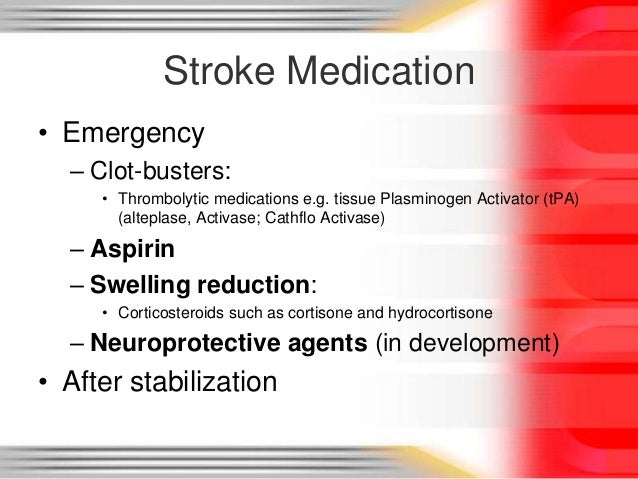Tpa Clot Treatment
When you are having a stroke, you need to go to the ER ASAP, undergo a CT STAT and receive tPA through an IV if necessary. In other words, upon recognizing the symptoms of a stroke, you should proceed to the nearest emergency room (ER) as soon as possible (ASAP). Upon arrival, you would undergo a computed tomography (CT) scan immediately (STAT) to determine the cause of the stroke. If a blood clot is detected during the scan, you may receive tissue plasminogen activator (tPA) intravenously (IV) to help break up the blood clot.
- TPA is a thrombolytic or a “Clot Buster” drug. This clot buster is used to break-up the clot that is causing a blockage or disruption in the flow of blood to the brain.
- Clot-dissolving drugs are given within four-and-a-half hours of the onset of symptoms. Tissue plasminogen activator (tPA) is given through a vein in the arm after the doctor has confirmed the stroke's cause, and there is no evidence of bleeding. Mechanical Clot Removal Devices to Loosen and Remove Clots.
- TPA is a thrombolytic or a “Clot Buster” drug. This clot buster is used to break-up the clot that is causing a blockage or disruption in the flow of blood to the brain and helps restore the blood flow to the area of the brain.
Catheter-directed thrombolysis is a minimally invasive treatment that dissolves abnormal blood clots in blood vessels to help improve blood flow and prevent damage to tissues and organs. A catheter is inserted into a vein in the leg and carefully threaded through the vein with the help of x-ray imaging until it reaches the site of the blood clot.
More than 80 percent of strokes are caused by a blood clot that moves into a vessel and blocks blood flow. These ischemic strokes typically are treated with tPA, a clot-busting drug that helps dissolve the blood clot and restore blood flow to the brain. Strokes also may be caused by the rupture of a weakened blood vessel, resulting in blood leaking into the brain. These hemorrhagic strokes should not be treated with tPA because the medication could cause increased bleeding.
The key to successful treatment for ischemic strokes is rapid treatment. That is because when tPA is administered within three hours of the onset of symptoms, it can help reduce disability and limit damage caused by lack of blood flow to the brain. Although tPA usually is given through an IV, it also can be delivered through a long catheter that is guided through blood vessels directly to the blockage. This alternative may benefit patients when treatment cannot begin within three hours after stroke symptoms started or when initial tPA treatment has not been sufficient to dissolve the blood clot. The local administration of tPA can occur up to six hours after the onset of stroke symptoms.
The decision to use tPA or other clot-busting drugs, also called thrombolytics, is based on numerous factors, including age, gender and medical history.
In general, tPA is not recommended for patients who are pregnant or have:

- A history of bleeding problems.
- Uncontrolled high blood pressure or endocarditis
- (infection of the lining of the heart).
- Had recent surgery or injury.
- Diabetic retinopathy (eye problems due to diabetes).
Tpa Clot Treatment Causes
In addition to treating ischemic strokes, thrombolytic therapy using tPA also may be used to treat clots in the lungs, deep veins in the legs, heart, or arteries elsewhere in the body. However, clots may reform in blood vessels, especially if the underlying cause for the blockages is not properly diagnosed and treated. Following treatment with tPA, patients are advised not to take anticoagulants or antiplatelets, such as aspirin, which could interfere with normal clotting.
Tpa Clot Treatment
If you experience the warning signs of a stroke, such as sudden numbness or weakness on one side of the body, confusion, difficulty speaking, blurred vision, sudden headache or trouble walking, call 9-1-1 right away. A stroke is an emergency that requires immediate medical attention.